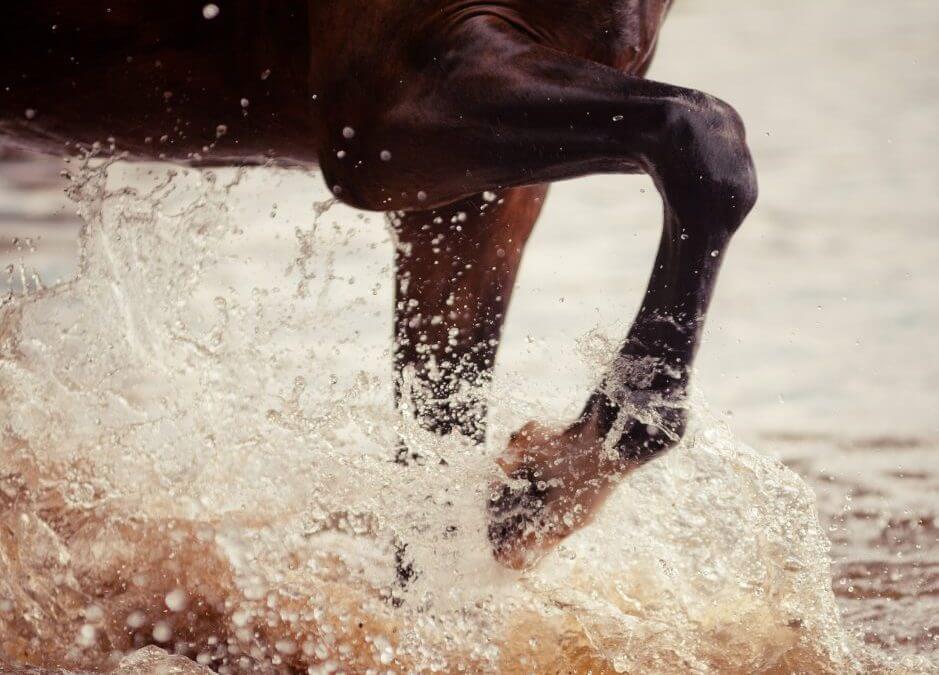A few weeks ago, our technical teams took on the challenge of designing a water-resistant sensor to collect data during balneotherapy sessions. In this article, we decided to explore the various benefits and limitations of this practice for racehorses.
The therapeutic use of water dates back to the Roman times. At that time, hot water baths were used by classical medicine to treat injuries and illnesses. Today, physiotherapists continue to use the benefits of water, whether cold or hot, to heal, relax and unwind the body. Also known as balneotherapy, this branch of medicine is applicable to horses.
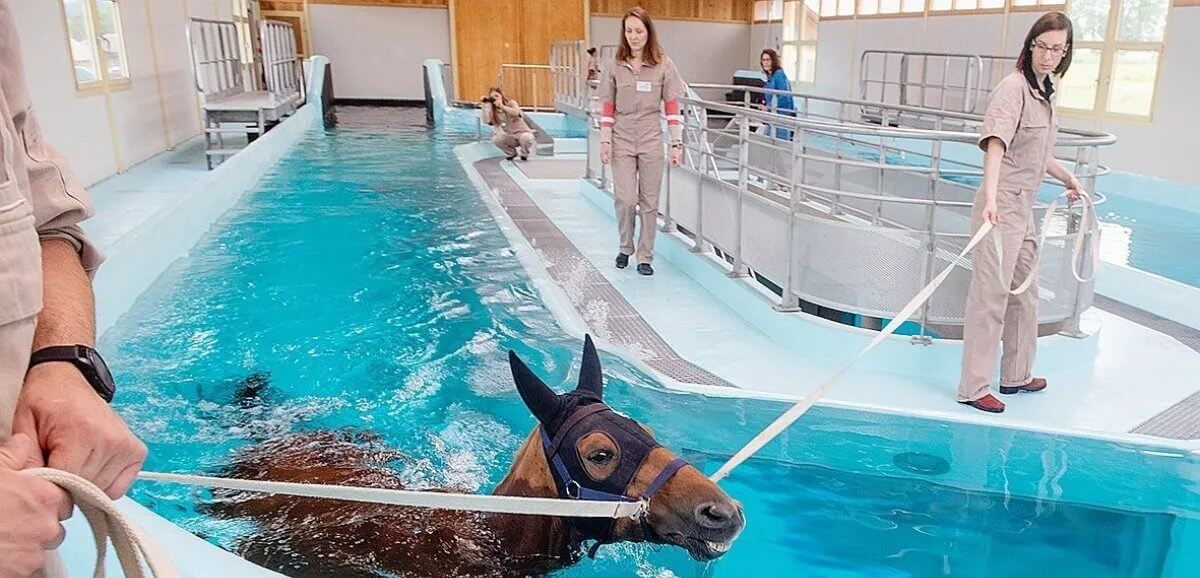
The development of the equine facility in Goustranville, Normandy is proof of the usefulness and effectiveness of these methods on horses’ bodies. The center “is equipped with a panoramic circular swimming pool allowing the filming of the horses’ movements while swimming, and a powerful submerged treadmill with the possibility of studying the horse’s locomotion during walk and trot through its specific glass walls and the development of connected sensors. Its aim is therefore to accompany horses in their rehabilitation, recovery and to improve their performance thanks to the benefits of equine balneotherapy”.
What is balneotherapy and what are its benefits?
“Balneotherapy is a set of treatments based on the immersion of the body or part of the body in a bath. It can be used for therapeutic or simply relaxing purposes. Balneotherapy can be the the first part of a convalescent horse’s return to work, and can even constitute a total and complete rehabilitation on its own“.
Balneotherapy can take many forms. In the equine environment, the main methods of balneotherapy are the following:
- The pool: the horse walks and swims in a water corridor of varying depths, from 50cm to 3m deep.
- The walker: as in a classic walker, the horse must walk in circles with a maximum depth of 80cm and a variable counter-current depending on the intensity and difficulty desired.
- The spa: the horse stays passively put in the water, the aim being to relax him or help him heal from pain.
There are other variables to consider, including the temperature of the water. Cold water strongly mobilises the immune system, drastically reduces nerve conduction and controls inflammation. Conversely, warm water relaxes numb muscles, reduces tension and neutralises bacteria.
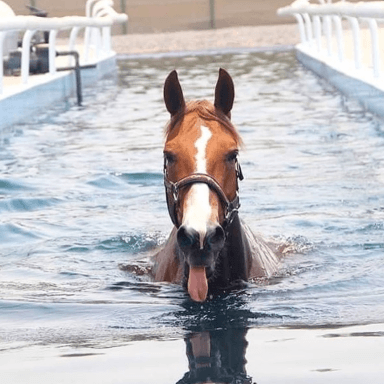
As with the human body, balneotherapy has many benefits for the body, bones and muscles of horses. Among these benefits, the most sought after for racehorses are the following:
| BENEFITS | UTILITY |
| Stimulate blood circulation | Allows a better irrigation of the muscles and reduces the chances of contractures, aches… |
| Increases heart rate and lung ventilation | Improves the fitness of the racehorse by working on his breath, during an unusual effort. |
| Relieve the body and limbs | With a decreasing weight constraint in the water, the horse relaxes his limbs and can hold his body upright thanks to a minimal effort. |
| Moving a limb frozen in pain | |
| Develop endurance and resistance to fatigue | Balneotherapy stimulates the horse’s muscles by offering increased resistance in the water. It is more difficult to move forward in water than on land. |
| Pain-free joint work (and osteoarthritis relief) | Again, with reduced gravity, the horse can mobilises his joints with less load. This allows them to be fully exercised with less pain. |
| Complement training and optimise performance | Balneotherapy allows to change the effort intensity required from a horse and therefore maximises the development of his muscles and cardio. |
| Correct muscular asymmetries and act as a posture corrector | By providing a perfectly uniform environment, the horse works his muscles evenly, enabling the correction of asymmetries and incorrect postures. |
In short, the balneotherapy benefits can improve a horse’s physical condition while minimasing the risk of injury. In addition, it can also help the rehabilitation by making a horse work in a supervised environment. Finally, balneotherapy can simply be used in the form of hydromassage to relax the horse’s muscles and body. This is particularly helpful in increasing the horse’s well-being.
Credit Domaine de Saubauméa: Our waterproof sensor was developed in partnership with Domaine de Saubauméa.
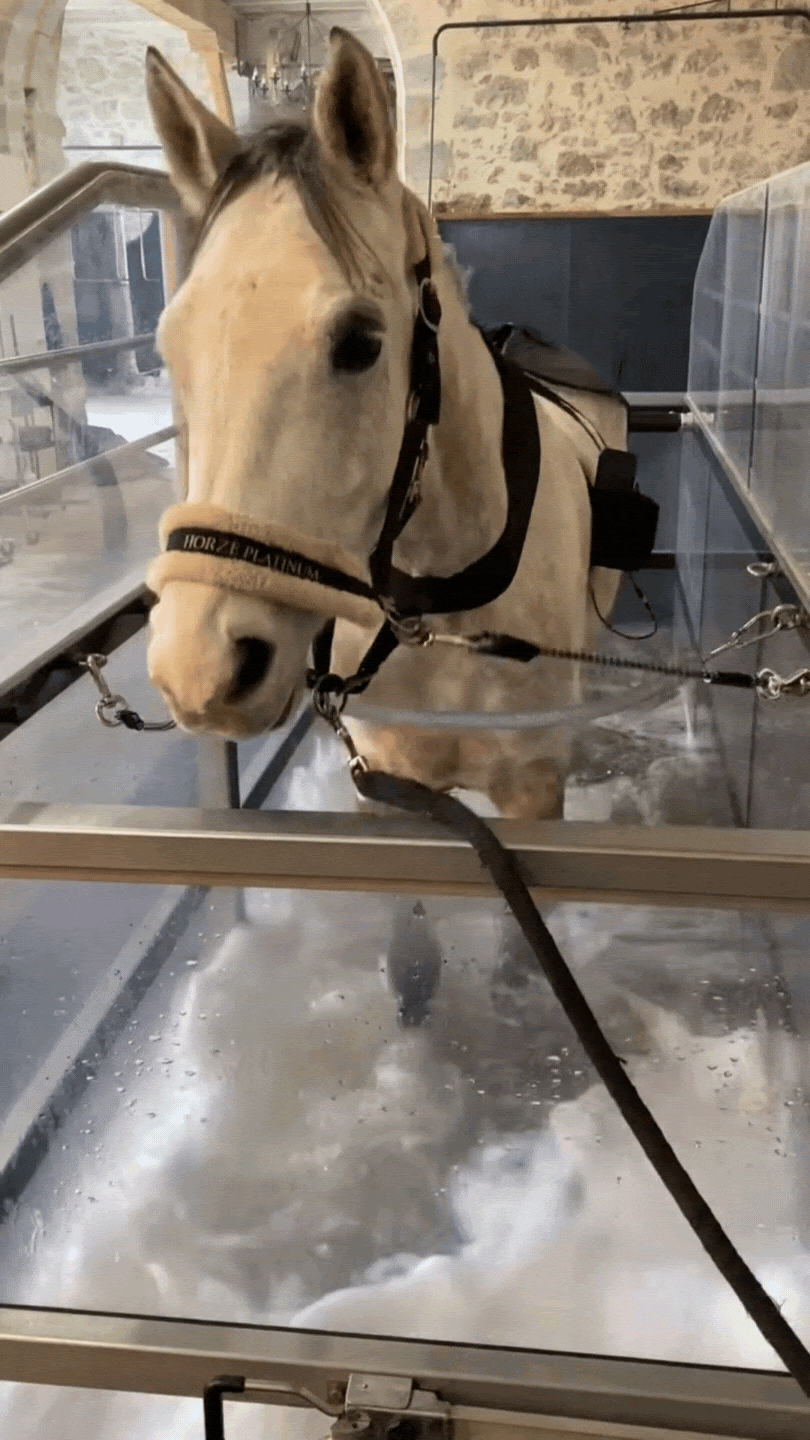
How do you set up a treatment using balneotherapy?
Balneotherapy takes many forms and can treat many problems. In order to maximise its effectiveness, the therapeutic need must be defined beforehand.
Treatment: following an injury (such as tendonitis) or after an operation, water can help the horse’s body to regenerate. Passive balneotherapy, such as a spa, is recommended to reduce stress and pain around the convalescent area.
Getting back into shape: using balneothertapy enables to accompany smoothly an athlete horse’s return to work after an injury or a rest period. With respect for the horse’s condition, aquatic work can be made more intense by increasing the depth of the water and using counter-currents to intensify the hardness of the effort.
Recovery: after a race or an intense physical effort, the horse can recover in the water thanks to active balneotherapy. An easy, shallow and non-counter-current walking effort in the water helps the racehorse to fight against aches and fatigue caused by the effort. During the season, it can also allow a better recovery between intense training and racing.
Relaxation: whether in passive or active form, balneotherapy can help to relax a stressed horse, a racehorse at the end of the season or following its reformation.
The balneotherapy type should be appropriate to the needs of the horse in question. The method and intensity of the balneotherapy should serve the desired effect.
What happens during a balneotherapy session?
Each balneotherapy session begins with an introduction to the horse’s machine. This is necessary to calm the horses and not to frighten them. In this way, the horse begins his effort without apprehension or fear, allowing the benefits of the therapeutic session to be maximised.
In the case of active balneotherapy (with walking, swimming or strenuous exercise) the horse performs a warm-up beforehand. Indeed, the effort required in the water can be rough and is unusual, and a horse that is not warmed up could injure himself or be hurt.
During the session, the horse experiences a strong stimulation of his cardiovascular system. In addition, depending on the nature of the effort required in the water, other effects already described occur. In short, the horse works differently than usual, with less stress and varying intensities.
What parameters should be measured during a balneotherapy session?
This atypical and not yet widespread practice can represent a stressful environment for the horse. It is therefore preferable to monitor the sessions requiring a high intensity. The use of a heart rate monitor contributes to the safety of the session to ensure the well-being of the horse. By measuring the heart rate and ECG in live, it is possible to monitor the horse’s stress or relaxation and to detect alarming signs in order to act accordingly.
To evaluate the session, this collected data allows to assess the recovery, the different effort zones (thanks to the heart rate) and the progression over time. By analysing the effort intensity, the planned treatment can be changed. Thus, each horse benefits from a tailor-made treatment adapted to his evolution.
EQUIMETRE, an equine and water-resistant technology, collects these different parameters to ensure quality monitoring during balneotherapy sessions.
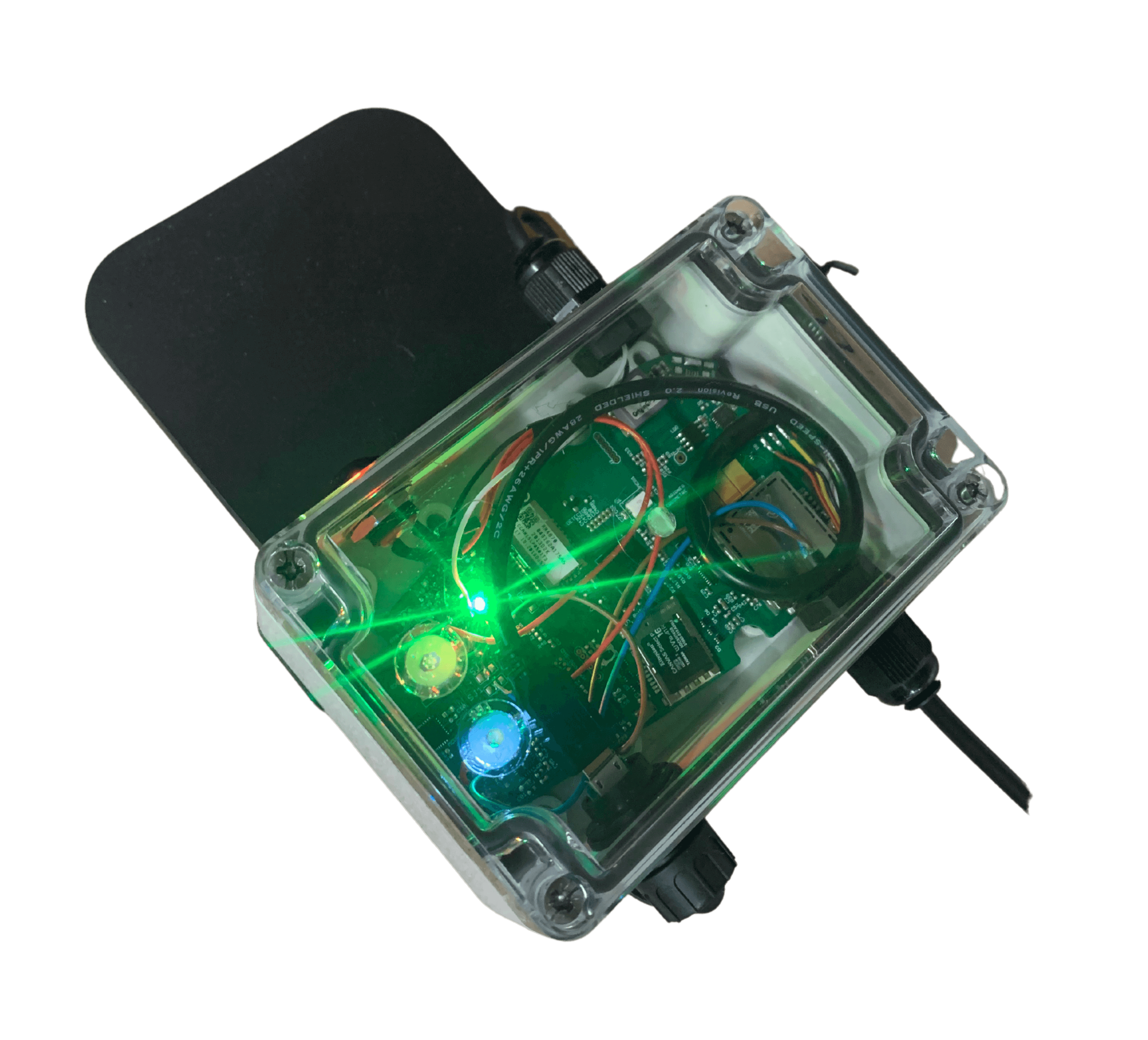
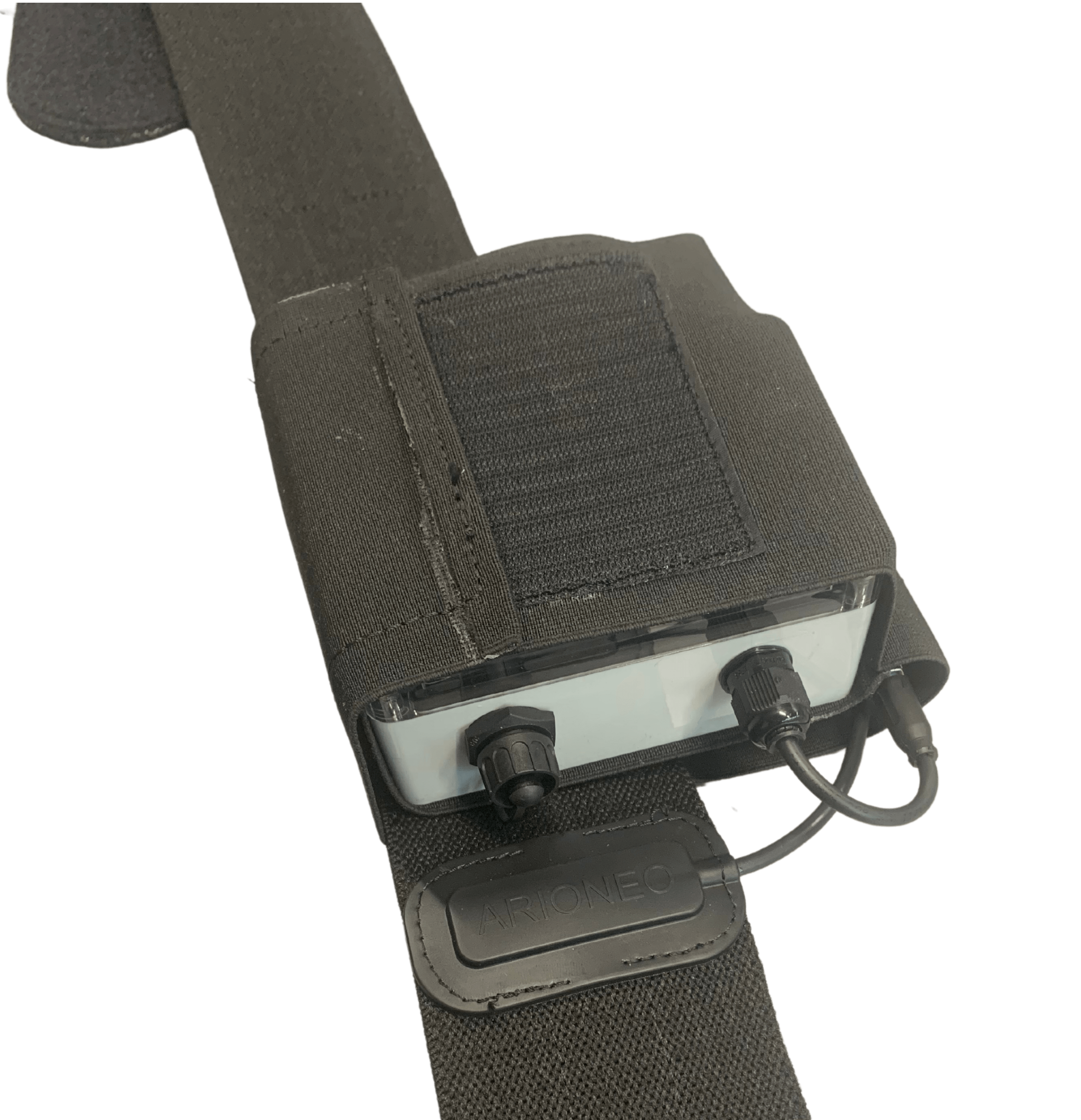
Does balneotherapy have any limitations?
Despite all the advantages outlined, balneotherapy has some limitations that hinder its democratisation.
First of all, the scarcity of places offering such services makes the use of balneotherapy complicated. For many trainers or owners, it involves a long and expensive journey with the treated horse. Generally located in stud farms or veterinary clinics, equestrian balneotherapy and hydrotherapy facilities do not yet offer a complete coverage of the French territory.
Moreover, this aquatic therapy has a significant cost. For example, the Haras de Sassy in France offers its services from 40€ per day, with a minimum of 1 month on site. The long duration of this type of treatment makes it expensive, as well as often highly impractical.
As balneotherapy in horses is not yet a science mastered from A to Z, some undesirable effects are still unknown. For example, by stimulating the cardiovascular system (and therefore the horse’s heartbeat) rapidly and highly, balneotherapy can be dangerous for horses with high blood pressure. Similarly, balneotherapy pools, which are often used by several horses, are ideal places for the transmission of disease and bacteria.
Furthermore, as it is mainly done at walking pace, it develops muscles that are not necessarily the most important for the racehorse. In fact, in order to optimise the performance of racehorses, the muscle development offered by balneotherapy is not adequate. It is therefore necessary to use balneotherapy for horses in a rational way.
In conclusion, balneotherapy is an innovative treatment method for high level equine athletes, it must be carried out by experts who will know how to dose and choose the type of aquatic work required. Thanks to connected technologies, its effects can be quantified in order to accompany horses as closely as possible in their recovery or rehabilitation.
Key words: athlete racehorse, equestrian balneotherapy, racehorse balneotherapy, live horse ECG, racehorse heart rate frequency, EQUIMETRE waterproof sensor

